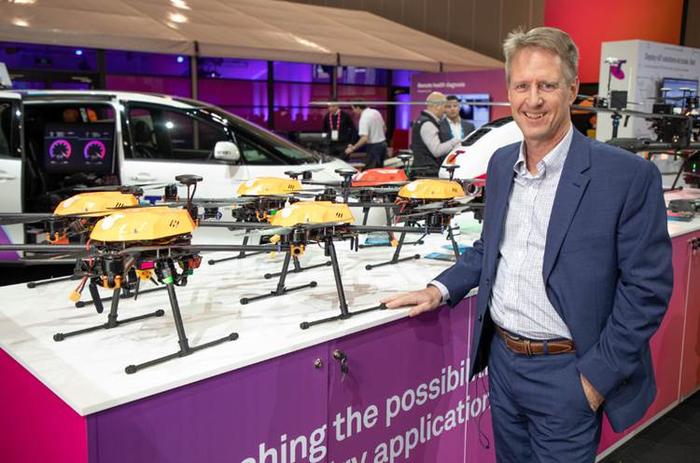Telstra turns drones into ‘cells on wings’ for mobile coverage
- 20 September, 2018 11:57

A drone equipped with a small mobile base station could be used to provide mobile coverage in the aftermath of natural disasters.
Telstra Labs has been experimenting with what its dubs a ‘cell on wings’. Telstra says that the drones represent the evolution of its ‘cell on wheels’ (COW): The generator-powered mobile base station that the telco uses to provide mobile coverage when infrastructure has been damaged or in cases of increased demand in areas (festivals, for example).
Telstra Labs currently has three drones that it has been using to explore the concept's potential. Without power, the drones probably deliver about three quarters of an hour of flight time. However, Telstra chief technology officer Hakan Eriksson said that the drones could be connected to a power lead attached to a ground-based generator – potentially allowing near-indefinite flight time.
A lead could also be used to connect a drone to a satellite-connection-equipped COW or other form of backhaul. Potentially a drone could be equipped with its own satellite antenna.
One of the drones on display at the Telstra Vantage conference in Melbourne was equipped with a small base station capable of handling 128 simultaneous calls. The drone is capable of being fitted with up to three of the cells. If a drone was connected to a base station on the ground, it could be used to handle up to 4000 simultaneous calls.
Different antenna configurations are possible depending on the area that requires coverage. A single drone could provide “many, many kilometres” of coverage, Eriksson told Computerworld. Today a 35-metre-tall base station’s coverage typically drops off at a maximum of 35 kilometres because of the curvature of the Earth – the drones, however, are capable of reaching altitudes in excess of 100 metres, the CTO said.
The CTO also outlined Telstra’s work to develop drone swarm technology that could be used to coordinate an aerial fleet to help search an area for a missing person. The idea is that a swarm could be operated by a single pilot, though this is not currently allowed under Australian aviation regulations.
The drone swarm uses software that Telstra has developed. The swarm formation allows an area to be searched “much, much faster,” Eriksson said. For example in the case of a missing child a single drone might have to cover an expanding area because he or she may be moving – a swarm could swiftly provide blanket coverage of an area.
Currently, the drones are fitted with 4G dongles for communication – however, Eriksson said that in the future they could be capable of being equipped with 5G gear.
Telstra has previously used drones to aid surf-lifesaving as well as inspect its own infrastructure.
The author traveled to Telstra Vantage in Melbourne as a guest of Telstra.

